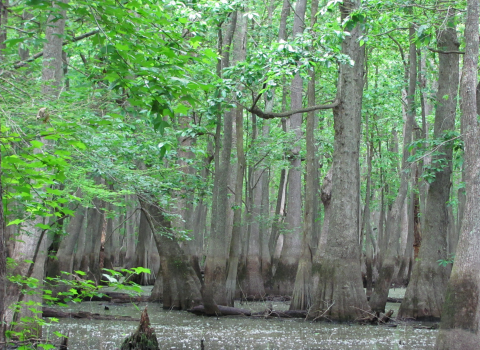As part of an on-going effort to provide more flexibility and further incentives under the Endangered Species Act (ESA), U.S. Fish and Wildlife Service’s Director Dan Ashe has issued a Director’s Order establishing a new policy that will provide states a new tool to engage landowners in voluntary conservation efforts to help America’s at-risk species before listing under the ESA.
Under the policy, effective immediately, landowners can generate mitigation credits for efforts that benefit declining species through conservation programs set up by state wildlife agencies. These credits can later be redeemed to offset or mitigate actions that are detrimental to a species should it subsequently be listed under the ESA. The credits may also be traded or sold to a third party.
“We all have a stake in the future of our nation’s wildlife, and many landowners are keen to play a role in helping ensure our wild plants and animals and their habitats are conserved for future generations,” said Director Ashe. “This policy provides another mechanism for private landowners, government agencies and others to do just that. By investing in early voluntary conservation actions on behalf of wildlife before they reach the point at which they need to be listed under the Endangered Species Act, we can provide both a more secure future for at-risk species and reward those who make it happen.”
In developing and finalizing the policy, the Service worked closely with the Federal-State Joint Task Force on Endangered Species Act Policy that includes representatives from state fish and wildlife agencies. The Service has engaged with the Joint Task Force to identify and implement ways to improve consistency and clarity of how the agency administers the ESA.
“This is great example of collaboration between the Service and state fish and wildlife agencies to encourage and incentivize voluntary conservation actions that sufficiently protect at-risk species so ESA listing and regulatory measures are not needed,” stated Nick Wiley, AFWA President and Executive Director of the Florida Fish and Wildlife Conservation Commission. “AFWA is appreciative of this innovative approach that values and credits effective conservation stewardship, particularly on privately owned, working landscapes and recognizes the important efforts being led by state fish and wildlife agencies to recover and conserve species that most need our cooperative support.”
The policy differs from Candidate Conservation Agreements with Assurances (CCAAs), another tool in the ESA toolbox. For example, CCAAs are only open to non-federal landowners and not federal agencies, and their primary incentive is the assurance that if a landowner takes certain actions to conserve the species there will be no further restrictions if the species is listed. In contrast, the new policy would be available to any landowning entity, including states, tribes, corporations, private individuals and federal agencies, but with marketable credits rather than regulatory assurances providing the primary incentive for participation.
By incentivizing early voluntary conservation efforts for a species before it reaches the point when listing is necessary, the policy will help protect at-risk wildlife from habitat loss, competition from nonnative species, and other threats.
At-risk species that could benefit from these prelisting conservation actions do not have to be formal candidates for listing under the ESA. Credit can be earned only before a species becomes listed, and only for actions that are not mandated by federal, state or local law and are not part of an existing CCAA. In order to receive credit, the conservation actions must be part of a state program that a state agency establishes in accordance with this policy.
States may choose, at their discretion, to set up and administer a program that follows the policy. Using state wildlife actions plans or other formal conservation strategies for a species, states would provide the overarching species conservation framework for these voluntary conservation actions, would monitor impacts and benefits to populations, and provide oversight to ensure successful implementation and maintenance of conservation actions. The Service would review the state programs to ensure they follow the policy and assist states, as needed, in developing conservation strategies, and in tracking implementation and maintenance of voluntary actions.
Federal agencies will be able to use conservation credits they earn as a result of proactive conservation efforts when undertaking ESA section 7 consultations. This part of the ESA mandates that federal agencies must consult with the Service before funding, permitting or undertaking an action that may affect a listed species. The policy clarifies that when beneficial actions are taken by federal agencies before a species is listed, the Service will give those actions appropriate consideration during the consultation process.
This regulatory improvement is consistent with Executive Order 13563, which calls for a retrospective analysis of existing rules to make the agency’s regulatory program more effective and less burdensome in achieving the regulatory objectives, and was included in the Department of the Interior's Final Plan for Retrospective Regulatory Review.
Additional information, including a copy of the policy can be found at: https://www.fws.gov/endangered/improving_ESA/prelisting-conservation.html.



